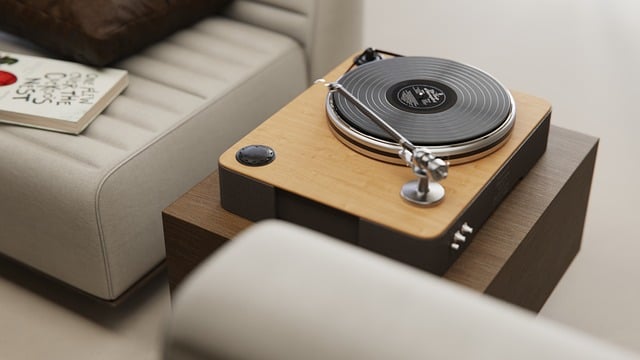
Vintage vinyl furniture is a timeless example of classic design and durable craftsmanship in home décor. Whether it is a retro dining chair or a mid-century sofa, these pieces have a distinct charm that appeals to enthusiasts in addition to their historical significance. However, to preserve their longevity, vintage vinyl furniture needs to be handled carefully and the materials must be understood.
We will dive into the art of cleaning and maintaining your beloved vintage vinyl furniture in this extensive guide. From mild cleaning methods to keeping vinyl shiny, every section is designed to give you the knowledge you need to preserve and bring back the beauty of your priceless furniture. Come along on this journey through the decades, where vintage charm meets practical care.
See also our post on A Complete Guide on How to Clean and Maintain Your Vinyl Tile Flooring
Understanding Vintage Vinyl
Identify the Type of Vinyl
Vintage vinyl furniture comes in various types, and each requires specific care. Identify whether your furniture is made from PVC vinyl, PU vinyl, or a blend. This knowledge is crucial for selecting appropriate cleaning agents.
Check for Signs of Wear
Examine your vintage vinyl furniture for signs of wear, such as cracks, peeling, or discoloration. Understanding the condition helps in tailoring your cleaning and care routine to address specific issues.
Know the Manufacturer’s Recommendations
If available, refer to the manufacturer’s recommendations for cleaning and maintenance. This insight provides valuable information about the intended care methods for your specific piece of vintage furniture.
Consider Professional Assessment
For valuable or delicate pieces, consider seeking professional assessment and restoration services. Experts can identify the best course of action to preserve and enhance the beauty of your vintage vinyl furniture.
Keep a Record of Maintenance
Maintain a record of your cleaning and care efforts. Note the products used, dates of cleaning, and any observations about the furniture’s condition. This record serves as a reference for ongoing care.
Gentle Cleaning Techniques
Dust Regularly
Regular dusting prevents the accumulation of dirt and debris on your vintage vinyl furniture. Use a soft, lint-free cloth or a soft-bristle brush to gently remove surface dust.
Mild Soap and Water Solution
Create a mild soap and water solution for gentle cleaning. Dampen a cloth with the solution and wipe the vinyl surface. Ensure the cloth is not overly wet, and dry the furniture thoroughly afterward.
Avoid Harsh Chemicals
Steer clear of harsh chemicals, including ammonia, bleach, or abrasive cleaners. These can damage the vinyl and lead to discoloration or deterioration of the material over time.
Test in an Inconspicuous Area
Before applying any cleaning solution, test it in an inconspicuous area to ensure it doesn’t cause adverse reactions. This precautionary step helps avoid unintended damage to the vinyl.
Use a Soft Toothbrush for Detailing
For intricate details or hard-to-reach areas, use a soft toothbrush. Gently brush these areas with a soap and water solution to remove dirt without causing harm to the vintage vinyl.
See also our post on A Comprehensive Guide on How to Clean and Refresh Your Home’s Upholstered Furniture
Dealing with Stains
Immediate Stain Treatment
Treat stains promptly to prevent them from setting. Blot spills with a clean, absorbent cloth and address stains as soon as they occur to avoid long-term damage.
Baking Soda for Stain Removal
Create a paste with baking soda and water to tackle stubborn stains. Apply the paste to the stained area, let it sit for a short time, and then gently rub with a soft cloth before wiping clean.
Vinegar for Grease Stains
Vinegar is effective for removing grease stains on vintage vinyl. Mix vinegar with water, dampen a cloth, and gently blot the grease stain. Ensure you dry the area thoroughly afterward.
Cornstarch for Ink Stains
Cornstarch is a gentle solution for ink stains. Create a paste with cornstarch and water, apply it to the ink stain, and let it sit for a few hours before wiping away with a clean cloth.
Test Stain Removers
Before using any stain remover, test it in a discreet area to ensure it doesn’t cause discoloration or damage to the vintage vinyl. Different stains may require specific treatment approaches.
Preserving Vinyl Luster
Apply Vinyl Conditioner
Use a vinyl conditioner to preserve the luster of your vintage furniture. Apply the conditioner as directed, ensuring even coverage to protect the vinyl from drying out or becoming brittle.
Avoid Prolonged Sun Exposure
Limit the exposure of your vintage vinyl furniture to direct sunlight. Prolonged sun exposure can cause fading and deterioration of the material. Use curtains or blinds to protect your furniture from harsh sunlight.
Rotate Furniture Placement
Rotate the placement of your vintage vinyl pieces periodically. This prevents uneven wear and tear, ensuring that all parts of the furniture age uniformly over time.
Temperature and Humidity Control
Maintain a consistent temperature and humidity level in the environment where your vintage furniture resides. Extreme fluctuations can impact the vinyl’s integrity, leading to cracks or warping.
Handle with Care
Be mindful of how you handle your vintage vinyl furniture. Lift and move pieces carefully to prevent stress on joints or delicate areas. This simple consideration goes a long way in preserving the overall condition.
Repairing Minor Damage
Addressing Small Tears
For small tears or punctures, consider using a vinyl repair kit. These kits typically include adhesive and patches designed to mend minor damages without compromising the vintage aesthetic.
Fixing Loose Seams
If you notice loose seams, address them promptly to prevent further unraveling. Use a vinyl adhesive to secure the seams, applying a thin layer and pressing the edges together until the adhesive dries.
Reinforcing Weak Joints
Reinforce weak joints by applying a small amount of wood glue to the affected areas. Gently press the joints together and allow the glue to dry thoroughly before using the furniture.
Consult Professionals for Extensive Damage
For extensive damage, seek professional assistance. Upholsterers or furniture restoration experts can provide solutions for significant repairs or refurbishment of vintage vinyl furniture.
Maintain a Stock of Vinyl Repair Products
Keep a stock of vinyl repair products on hand for quick fixes. These products are valuable for addressing minor damages as soon as they occur, preventing them from escalating.
See also our post on A Comprehensive Guide on How to Clean and Refresh Your Home’s Curtains and Drapes
Storage and Protection
Use Furniture Covers
When not in use, consider using furniture covers to protect your vintage vinyl pieces. These covers shield the furniture from dust, sunlight, and potential scratches, maintaining its condition.
Elevate Furniture Off the Floor
Place furniture on risers or pads to elevate it off the floor. This prevents direct contact with potential moisture and makes cleaning underneath the furniture easier.
Climate-Controlled Storage
If storing vintage vinyl furniture for an extended period, opt for climate-controlled storage. This type of storage helps maintain stable temperature and humidity levels, safeguarding the furniture from environmental damage.
Wrap in Soft Materials
When moving or storing vintage vinyl pieces, wrap them in soft materials like blankets or bubble wrap. This protective layer prevents scratches and provides an additional barrier against potential impacts.
Avoid Plastic Coverings
Avoid using plastic coverings directly on vintage vinyl furniture, as they can trap moisture and lead to mold or mildew. Opt for breathable materials to allow air circulation.
Periodic Inspections and Maintenance
Regularly Inspect Seams and Joints
Conduct periodic inspections of seams and joints to catch potential issues early. Addressing loose seams or weak joints promptly prevents more extensive damage and ensures the longevity of your vintage vinyl furniture.
Reapply Vinyl Conditioner
Regularly reapply vinyl conditioner to keep the material supple and prevent drying. This step is especially crucial in drier climates where the vinyl is more prone to becoming brittle.
Adjust Cleaning Routine as Needed
Adjust your cleaning routine based on the specific needs of your vintage vinyl furniture. If you notice changes in the material or encounter new stains, tailor your approach accordingly to address these issues.
Seek Professional Restoration
Consider professional restoration services every few years. These experts can assess the overall condition of your vintage vinyl furniture, perform necessary repairs, and provide recommendations for ongoing care.
Document Changes Over Time
Document any changes or observations over time. This record helps you track the evolution of your vintage furniture and informs your cleaning and care routine as the pieces age gracefully.
See also our post on Removing Water-Damaged Flooring: A Comprehensive Guide
Conclusion
Let the love and care you give these pieces reflect the timeless beauty they bring to your living area as we wrap up our exploration of cleaning and maintaining vintage vinyl furniture. Vintage furniture is more than just a combination of vinyl and wood; it is a story of design history and craftsmanship.
The story of these treasures will live on for generations to come if you know the subtleties of maintaining, cleaning, and occasionally restoring them. So, let your vintage vinyl furniture serve as more than just a piece of furniture; let it be a living example of the skill of maintaining items that hold memories of bygone eras. In the delicate balance between preservation and appreciation, your vintage vinyl furniture becomes a treasured legacy.







